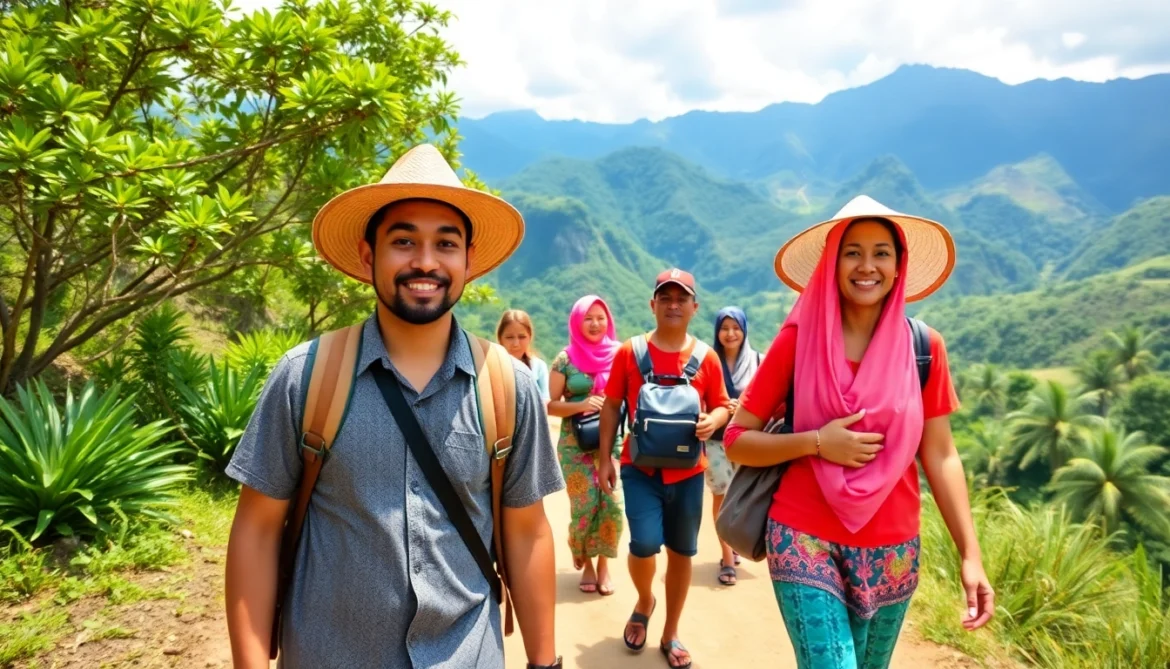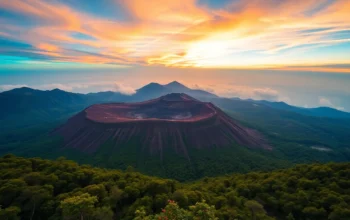Introduction to Lombok: Why It Should Be Your Next Travel Destination
Nestled in the Indonesian archipelago, Lombok is a mesmerizing island that offers an unparalleled blend of natural beauty, rich cultural heritage, and vibrant local traditions. With its pristine beaches, towering volcanoes, lush rice terraces, and a mosaic of authentic cultures, Lombok is rapidly gaining recognition as a must-visit destination for travelers seeking both adventure and serenity. Whether you are an adrenaline junkie craving surfing and mountain climbing or a cultural enthusiast eager to explore traditional Sasak villages, Lombok provides a comprehensive experience that caters to diverse interests. For travelers planning their journey, understanding the island’s unique attractions, cultural nuances, and practical logistics becomes essential—this is where a comprehensive and reliable guide becomes invaluable.
Overview of Lombok’s Unique Natural Attractions
Lombok’s natural landscape is a breathtaking showcase of geological marvels and ecological diversity. The island’s crown jewel is Mount Rinjani, Indonesia’s second-highest volcano, which stands at an impressive 3,726 meters. Trekking to Rinjani’s crater lake, Segara Anak, offers one of Southeast Asia’s most rewarding adventure experiences, accompanied by panoramic views and the chance to witness rare volcanic ecosystems. For those less inclined to strenuous hikes, the island’s beaches are equally stunning, featuring pristine white sands and crystal-clear waters conducive to surfing, snorkeling, and diving. Senggigi Beach, Gili Islands, and Kuta Beach Lombok are renowned spots that attract surfers and beach lovers alike.
Beyond coastal beauty, Lombok’s inland regions boast verdant rice terraces like those near Sembalun and Tetebatu, which are perfect for scenic walks and cultural immersion. The island is also home to unique flora and fauna, including the endemic Sasak monkeys and vibrant marine biodiversity off its coral reefs, making Lombok a haven for eco-tourists and nature enthusiasts.
Cultural and Heritage Highlights of Lombok
Lombok’s rich cultural tapestry is woven from its indigenous Sasak heritage, evident in traditional music, dance, crafts, and spiritual practices. Visit local villages like Sade and Sukarara, where you can observe intricate weaving techniques, learn about traditional architecture, and participate in cultural ceremonies that have persisted through centuries. The island’s religious life is deeply rooted in Islamic practices, complemented by pre-Islamic animist beliefs, creating a unique spiritual landscape.
One of the most iconic cultural symbols is the Sasak’s woven textiles, known as songket and ikat, which feature vibrant patterns and serve as important ceremonial garments. Festivals like Bau Nyale, where locals and visitors gather to catch sea worms believed to be the reincarnation of a legendary princess, exemplify the vibrant and participative nature of Lombok’s traditions.
Additionally, historical sites such as the ancient temples and megalithic stones scattered across the island offer insights into Lombok’s prehistoric and spiritual history, enriching the visitor’s understanding of the island’s deep-rooted cultural identity.
Best Time to Visit and Planning Tips
To maximize your Lombok experience, timing your visit is crucial. The dry season, from May to September, is ideal for outdoor activities, offering sunny weather, calm seas, and excellent visibility for snorkeling and diving. The rainy season, from November to April, brings lush scenery and fewer crowds but can hinder some outdoor adventures.
Planning your trip involves considering weather patterns, local festivals, and peak tourist seasons. Booking accommodations and tours in advance is advisable during July and August when the island attracts international visitors.
When preparing for your trip, consider packing lightweight clothing, sun protection, and appropriate gear for activities like trekking or water sports. It’s also helpful to learn some basic local phrases and cultural etiquette to foster respectful interactions and enrich your experience.
Essential Lombok Travel Guide: Navigating the Island
Transportation Options and Getting Around
Lombok offers a variety of transportation methods tailored to different budgets and preferences. The most common way to explore is by rental motorbike or scooter, which provides flexibility and access to remote areas. However, it’s essential to possess riding experience and adhere to local traffic laws.
For longer distances or those seeking comfort, hiring private drivers or using ride-hailing apps like Gojek and Grab are popular options. Public transportation options, such as minivans called “bemo,” are available but less reliable for visitors unfamiliar with local routes.
For inter-island travel, fast boats connect Lombok with the Gili Islands and Bali, while flights operate from Lombok International Airport to major Indonesian hubs. Navigating the island’s rugged terrain might involve some planning, and hiring a local guide or driver can optimize your travel experience.
Top Must-See Destinations and Hidden Gems
Known for its stunning beaches, Lombok’s must-visit spots include Kuta Beach, perfect for surfing and sunset views, and Tanjung Aan with its soft white sands. The Gili Islands—Gili Trawangan, Gili Air, and Gili Meno—are tiny coral atolls renowned for their vibrant marine life, ideal for snorkeling and diving.
For wildlife and nature lovers, Mount Rinjani National Park offers challenging hikes and extraordinary scenery. Waterfalls such as Sendang Gile and Tiu Kelep near Senaru provide serene spots for relaxation amidst tropical surroundings.
Hidden gems include the Sembalun Valley, with its panoramic vistas and agricultural landscapes, and the traditional Sasak villages where visitors can experience authentic local life. Less crowded beaches like Selong Belanak and Mawun Beach provide tranquil escapes.
Exploring beyond the well-trodden paths enriches your understanding of the island’s diverse attractions and offers opportunities for authentic cultural exchanges.
Local Cuisine and Cultural Experiences
Lombok’s culinary scene reflects its vibrant culture and agricultural bounty. Must-try dishes include Ayam Taliwang—spicy grilled chicken marinated with chili, garlic, and shrimp paste—and Plecing Kangkung, a fresh water spinach salad with chili and tomato. Seafood lovers will delight in freshly caught grilled fish, calamari, and lobster.
Night markets and warungs (local eateries) serve authentic dishes at affordable prices, providing a taste of daily life on the island. Participating in cooking classes or food tours offers deeper immersion into Lombok’s culinary traditions.
Cultural experiences such as traditional dance performances, weaving workshops, and spiritual ceremonies enrich visitors’ understanding of Lombok’s heritage. Engaging respectfully with local customs and festivities deepens the travel experience and fosters meaningful connections.
Practical Tips for Your Lombok Adventure
Accommodation Guide: From Budget Hostels to Luxury Resorts
Accommodation options in Lombok cater to all budgets and preferences. Budget travelers can find friendly hostels and guesthouses in Kuta and Mataram offering basic amenities and warm hospitality. Mid-range hotels and boutique resorts provide more comfort, often with scenic views and additional services.
For luxury seekers, several international-standard resorts and private villas are located near popular beaches, boasting private pools, spa services, and personalized experiences. Booking in advance during peak seasons ensures availability and the best rates.
Tips for choosing the right place include assessing proximity to desired attractions, reading recent reviews, and considering amenities like Wi-Fi, security, and transportation access.
Safety, Health, and Travel Essentials
Ensuring safety and health requires some preparation. Travelers should stay updated on vaccinations, carry insect repellent, and stay hydrated, especially during outdoor activities. Traffic can be chaotic; wearing a helmet and following local traffic laws is crucial when renting motorbikes.
Travel insurance covering medical expenses and emergencies is highly recommended. Access to medical facilities is available in major towns, but remote areas may have limited options. Carrying a basic first aid kit, mosquito nets, and necessary medications ensures preparedness.
Respect local laws and customs, including dress codes when visiting religious sites, and be mindful of the environment by avoiding plastic waste and supporting sustainable tourism practices.
How to Respect Local Customs and Environment
Respecting Lombok’s local customs and environment is essential for responsible tourism. Dress modestly when visiting villages and religious sites, and seek permission before taking photographs of people. Engaging with community-led initiatives and supporting local artisans promotes sustainable development.
Reduce plastic usage by carrying reusable bottles and bags. Participate in beach clean-up activities if possible. Recognize and honor indigenous practices and festivities with sensitivity and appreciation.
Supporting eco-friendly tour operators and accommodations that prioritize environmental conservation helps preserve Lombok’s natural beauty for future generations.
Booking Tours and Activities: The Best Guides and Packages
Choosing Reliable Local Guides and Tour Operators
Selecting reputable guides and tour operators enhances your safety and enriches your experience. Look for companies with positive reviews, clear licensing, and transparent pricing. Local guides with deep knowledge of Lombok’s history, culture, and ecology can provide insights unavailable elsewhere, making your excursions more meaningful.
Consider booking certified guides through trusted platforms or your accommodation’s recommendations. Engaging guides who promote sustainable practices ensures that tourism benefits local communities while protecting natural and cultural resources.
Popular Activities and Excursions for Different Interests
Adventure seekers can opt for volcano treks, waterfall hikes, or diving trips. Cultural travelers may enjoy village tours, weaving workshops, and traditional dance performances. Relaxation-focused visitors might indulge in spa treatments, yoga retreats, and beach lounging.
Night safaris, birdwatching, and marine conservation excursions are also available for niche interests. Tailoring activities to personal preferences ensures a memorable and fulfilling trip.
Making the Most of Your Guided Tours
To maximize your guided tour experience, communicate your interests and expectations clearly. Respect the guide’s expertise, ask questions, and engage actively. Arrive prepared with appropriate gear and curiosity.
Capture moments with photos, but always seek permission, especially when involving local communities. Participate in cultural exchanges genuinely, and consider supporting local artisans or community projects as a token of appreciation.
Enhancing Your Lombok Experience: Tips for Memorable Travel
Capturing and Sharing Your Journey
Documenting your trip through photos and journaling helps preserve memories and share insights with others. Use high-quality equipment and learn basic composition techniques for stunning images of sunsets, landscapes, and cultural scenes.
Sharing stories on social media, blogs, or travel forums can inspire others while promoting responsible tourism practices. Respect the privacy of local people and avoid exploiting their images or stories.
Connecting with Local Communities and Initiatives
Engage respectfully with local communities by participating in community-based tourism activities. This not only provides authentic experiences but also supports sustainable livelihoods. Volunteering for environmental or educational projects can deepen your connection and make your visit impactful.
Attending local festivals, markets, and workshops fosters cultural exchange and mutual understanding. Always approach interactions with humility and appreciation for the local way of life.
Planning for Future Visits and Continued Exploration
Keeping a record of your experiences and noting areas for further exploration helps in planning future trips. Lombok’s dynamic environment and evolving cultural landscape ensure that each visit offers new insights. Staying informed about ongoing conservation efforts, cultural festivals, and infrastructural developments allows travelers to contribute positively and return with more enriching experiences.
Building relationships with local guides and communities can also pave the way for deeper, more personalized travel adventures in future visits.

